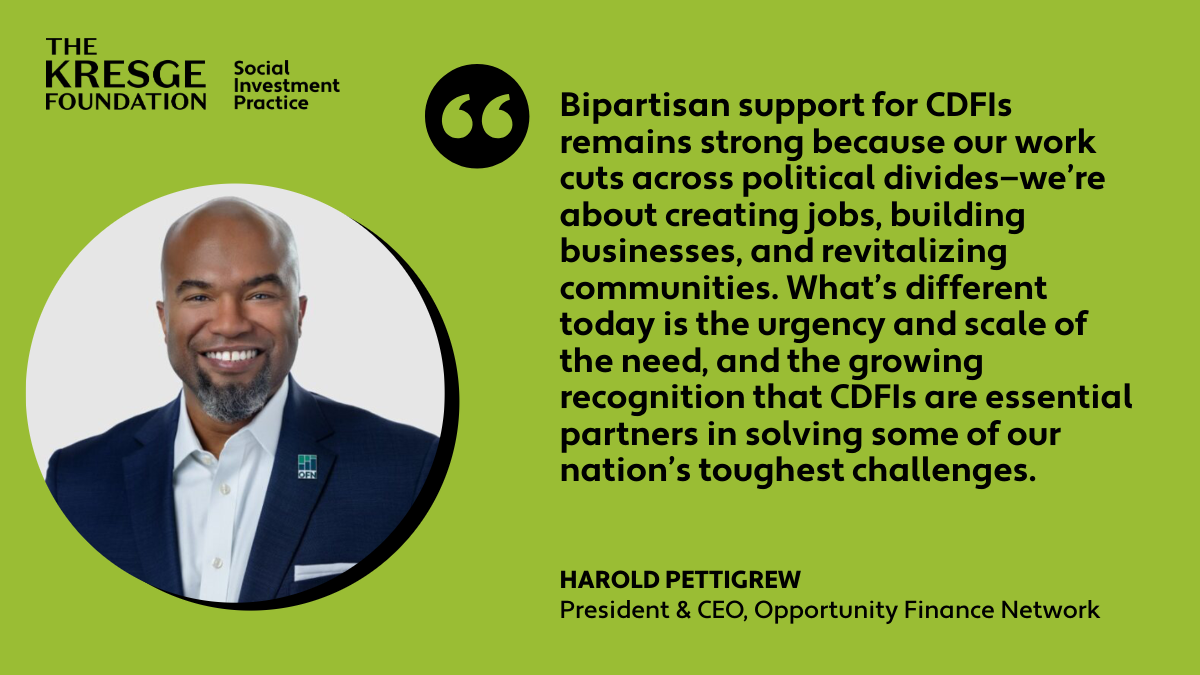Finance
How should you invest for your different financial goals? MintGenie explains

Let us see how you can invest for your different financial goals.
Prioritise your financial goals
First, list your financial goals into short-term, medium-term, and long-term goals. You can estimate the amount you have to accumulate to reach these goals and the required timeline for each of the goals.
After identifying these goals, the next step would be to classify them into regular and exciting goals. Regular goals might include saving for retirement, paying off loans, and building an emergency fund. These goals are important but might not motivate you to start investing towards these goals. On the other hand, exciting goals include those you are likely to invest money in as soon as possible. These are likely to be short-term goals such as travelling the world or purchasing a luxury car.
Combining regular and exciting goals
One of the ways that you can stay motivated is by tagging regular goals like retirement with exciting financial goals such as a yearly vacation.
For instance, if you are considering saving a minimum of ₹5,000 per month for a yearly vacation and ₹25,000 per month for retirement, you can start a Systematic Investment Plan (SIP) for your vacation before you begin investing for retirement. You can even allow a few SIP instalments to pass to become familiarised with the whole process of saving and investing.
Once you see that your vacation fund is nearing your target amount, you will most likely feel encouraged to invest for other long-term goals like retirement. After six months of starting the vacation SIP, initiate the SIP for your retirement fund. When you successfully achieve your vacation goal, you will experience the positive impact of planning and achieving your financial goals. This achievement can serve as motivation to continue investing in your retirement fund.
By linking your vacation and retirement goals, you might find that investing for retirement doesn’t feel like a chore but something enjoyable. You can also increase the SIP amount for your vacation by a certain percentage each year, say 5% or 10%. Simultaneously, raise your SIP for retirement by the same rate, ensuring that both goals progress in tandem.
You might also do it the other way around. You can also look at investing for both goals simultaneously. However, you have to discipline yourself to reduce/pause the SIP for your exciting goal if you pause your SIP for your retirement.
Set up automated savings/investments
There are two main ways to save/invest for your financial goals. The first method is making lump sum payments, and the second is setting up an automated savings or investment plan.
Setting up an automated plan will help you contribute effortlessly to regular and exciting goals. You will stay consistent as the amount will be directly debited from your savings account and moved to your investment account. It will also reduce the temptation to divert funds from your financial goals.
For exciting goals that you need to fulfil within a year or so, you might want to save the money in a Recurring Deposit (RD). For regular goals where you must invest more than seven years, you can invest in diversified equity mutual funds through SIP.
Track progress regularly
After you set up your RD or SIP, it is essential to track your progress periodically. Checking in on your goals every few months allows you to assess whether you are on target to achieve your goals. If not, it gives you time to make the necessary adjustments.
Many online investment platforms let you evaluate your investment’s performance and suggest the steps you need to take to reach your financial goals on time.
Celebrate milestones
Just like we treat ourselves when we hit milestones in our personal or career lives, we can also incorporate it into our financial goals. We know that celebrating milestones helps us stay motivated and make the whole journey a pleasant experience.
So, when you reach specific savings goals, such as completing three years of retirement planning without fail, you can consider treating yourself or your family members to a short weekend trip or a special reward. This will keep you inspired to continue investing for your long-term goals.
Lumpsum investments
In addition to SIPs, additional lumpsum investments can help you reach your financial goals faster. For instance, if you have received a bonus from your employer, you can split 50-50 and invest an equal amount towards both goals.
In conclusion, incorporating exciting and regular financial goals into your planning strategy can transform how you approach your long-term investments.
The objective is to start with the goals you are excited about. Once you are familiar with savings and investments, you can start with your long-term goals that might be essential but not necessarily exciting.
This approach ensures a more balanced financial future and makes the journey enjoyable and fulfilling. You can consult a financial advisor to make your dreams a reality.
Padmaja Choudhury is a freelance financial content writer. With around six years of total experience, mutual funds and personal finance are her focus areas.
Milestone Alert!Livemint tops charts as the fastest growing news website in the world 🌏 Click here to know more.
Download The Mint News App to get Daily Market Updates.
More
Less
Published: 10 Dec 2023, 10:09 AM IST

Finance
Financing opportunity: Q&A with Harold Pettigrew on the future of the CDFI Sector – Kresge Foundation

As the community finance field enters a new era—shaped by economic uncertainty, shifting capital flows, and growing calls for accountability—how can CDFIs prepare for what’s ahead? The Kresge Foundation spoke with Harold Pettigrew, the president and CEO of the Opportunity Finance Network (OFN) to help answer that question. This article is part of a series highlighting the impact of CDFIs and how the sector is adapting to the current environment.
MD: CDFIs play a unique role in our financial ecosystem, often serving communities that mainstream banks overlook. Why are CDFIs so critical for advancing economic growth and creating opportunities in underserved communities?
HP: In every corner of America, CDFIs show that impact and financial performance aren’t at odds—they reinforce each other. We address market gaps and go where traditional capital doesn’t: listening first, solving for need, and providing capital to people and financing projects that strengthen families and communities. Whether it’s a small business on Main Street or a housing development in a rural town, CDFIs make investments that build wealth and create opportunities that reach people and communities that need it most.
MD: CDFIs seem to have broad support in Congress, even when some administrations have looked to reduce funding or support. Is bipartisan support materially different today? What role has OFN played in telling the CDFI story and maintaining that support?
HP: Bipartisan support for CDFIs remains strong because our work cuts across political divides — we’re about creating jobs, building businesses and revitalizing communities. What’s different today is the urgency and scale of the need, and the growing recognition that CDFIs are essential partners in solving some of our nation’s toughest challenges. OFN and CDFIs tell real stories of impact—stories of people across the country whose lives and livelihoods have changed thanks to the capital provided by CDFIs. Through advocacy, research, and direct engagement with policymakers, we’ve elevated a clear, consistent message: For over 30 years, CDFIs have delivered results addressing market gaps in providing access to capital to communities across the country.
MD: Beyond federal funding concerns, what are the current challenges and needs CDFIs are facing in their day-to-day efforts to support communities?
HP: CDFIs are navigating a complex economic environment— rising interest rates, tighter capital markets, and growing community needs are stretching our resources like never before. Many CDFIs are being asked to do more with less, while also investing in their own operations to scale effectively and sustainably. OFN is working to develop diverse pools of flexible capital, make deeper investments in talent and technology, and new policy frameworks that support and recognize the unique value CDFIs bring. The demand is clear — what’s needed now is bold investments to meet the moment and craft new solutions for the future.
MD: Philanthropies and community development departments of banks and insurance companies have always been crucial partners for CDFIs — how can they best support and invest in CDFIs right now?
HP: Our partners in philanthropy and financial services have been critical to the success of CDFIs, and now they have a critical opportunity to strengthen the CDFI industry for the future. That means moving beyond transactional grantmaking to long-term, trust-based partnerships. It means offering flexible, risk-tolerant capital that lets CDFIs innovate and expand, and it means investing in the infrastructure — people, systems, data — that helps us operate at scale.
MD: What keeps you optimistic about the future of the CDFI sector?
HP: What keeps me optimistic is the impact and commitment I see every day, from the entrepreneurs we finance, to the communities we serve, to the CDFI leaders innovating with courage and conviction. The sector is growing, diversifying and deepening its impact. We’re not just responding to the moment — we’re helping define the future of expanded access to finance and financial services. And with every new loan, every new partnership, every life changed, we’re proving that when we expand access to opportunity — we don’t just finance projects, we shape the future of communities across the country.
Harold Pettigrew is the President and CEO of Opportunity Finance Network (OFN)
Finance
Reimagining Finance: Derek Kudsee on Coda’s AI-Powered Future

Derek Kudsee is a veteran of the enterprise software industry, with senior leadership roles at industry giants such as SAP, Salesforce, and Microsoft under his belt. So, when he took the helm as the new Managing Director for Unit4 Financials by Coda, ERP Today sat down with Kudsee to discuss his vision for Coda, the promise of agentic AI to make work feel lighter for finance teams, and his mission to transform the classic system of record into a dynamic system of intelligence for the Office of the CFO.
What was it about the opportunity at Unit4, and specifically the challenge of modernizing Coda, that convinced you to take this role?
A rare combination of having a deeply trusted platform and a clear opportunity to reimagine the finance function drew me to Unit4, and specifically the Coda business. Some of the largest enterprise customers have been running on this platform for decades. I’ve been brought in to help these finance teams run more efficiently and provide greater insight through agent-driven automation. We live in a world where technology has converged in our consumer and professional lives. Therefore, modernization is not only about addressing complex systems, but also about enhancing the user experience. This combination of running a deeply trusted platform, reimagining its capabilities in an AI-driven world, and modernizing the user experience was attractive.
Unit4 Financials by Coda’s goal is to deliver an “AI-fueled office for the CFO” using agentic AI. How will a finance team using Coda experience this in their day-to-day work?
When one thinks of an AI-fueled Office of the CFO, it’s about having agents deep inside those finance processes that will suggest, explain, and act within guardrails that finance teams can set. The work should feel like the machine is performing tasks that were previously done manually or laboriously.
A simple example is in an accounts payable department. An agent can automate everything from invoice capture using AI-driven OCR, verify that the invoices are within policy, queue them for approval, send them to the respective individuals, and flag exceptions along the way. Users can see how the work feels lighter because the machine handles everything from capture to the final stage, including payment release.
How do the AI functionalities offered by Coda differ from what competitors are offering right now?
Many vendors today have a finance module. However, we aim to be the best standalone financial management system, not a generic suite. We’re not trying to be finance because we want to sell an HR or CRM system. That means we need to embed intelligence deeply within the finance processes so that the software acts, takes action, and performs activities for the finance function. For that, the agentic AI needs to operate with autonomy, understand financial context, and learn from user behavior.
Moreover, fundamentally, Coda has always been built on a unified financial model. We’ve never had Accounts Payable separate from Accounts Receivable that needed to be consolidated. Our AI works on clean, structured data from day one, and that’s the foundation for accuracy. We don’t need to chase hype to incorporate AI. We’re going to redefine the finance function with AI at its core.
How do you plan to balance the introduction of these cutting-edge innovations without disrupting the core stability that Coda is known for?
The safest way to modernize finance is to add certainty around the core, rather than disrupting it. Our core is why customers have been running Coda for 20-30 years. Thus, stability is not a nice-to-have; it’s non-negotiable. Our customers run mission-critical processes, and that trust is sacred to us. Therefore, every innovation we deliver, whether it’s UX modernization or AI, will be built on one simple principle: if it compromises stability, we don’t build it. We don’t ship it.
With that rock-solid foundation in place, we can layer intelligence and usability on top. While some software providers are still determining the stability of their platform, we can offer customers the best of both worlds. They’ll have the reliability they’ve counted on for decades, and now we bring them the innovation they need to stay ahead.
What This Means for ERP Insiders
Your biggest enemy is decision latency. According to Kudsee, the primary challenge for modern finance is the gap between a business event occurring and the ability to respond intelligently. This decision latency, caused by fragmented data, batch processes, and manual workarounds that are standard in traditional ERP environments, prevents finance from being a proactive and strategic partner. Coda’s goal is to shrink that gap from weeks or days to near-real-time.
Shift the ERP mindset from system of record to system of intelligence. For decades, the primary function of ERP finance modules has been to record transactions accurately. This is no longer sufficient, as Kudsee notes. A modern financial platform must function as a system of intelligence that not only records data but also analyzes, predicts, and automates actions within core financial processes, effectively acting as the intelligent brain of the CFO’s office.
Prioritize financial depth over suite breadth. Kudsee suggests that the single ERP for everything strategy can result in a finance module that is a jack-of-all-trades but master of none. The alternative approach is to prioritize depth and best-in-class functionality for the critical finance function. Instead of settling for the generic finance module within a larger suite, consider how a dedicated platform like Unit4 Financials for Coda, focused on deep financial control, insight, and automation, can deliver more agility and tackle core challenges, such as decision latency, more effectively.
Finance
‘Worst kind of setup for the Fed’: What Wall Street is saying about the central bank’s next rate decision
Weak labor market data overshadowed a sticky inflation print last week, keeping investor expectations intact that the Federal Reserve will cut interest rates at its policy meeting on Wednesday.
Government data released Thursday showed that consumer prices rose 0.4% in August from the previous month, an uptick from July’s 0.2% increase. Meanwhile, separate data showed weekly jobless claims rising to 263,000 — the highest in nearly four years, up from a revised 236,000 the prior week.
The Fed weighs its dual mandate of full employment and price stability when deciding whether to change interest rates. Given the dynamic of a slowing jobs market coupled with sticky price increases, Wall Street strategists told Yahoo Finance that the Fed has a complicated decision ahead.
“It’s the worst kind of setup for the Fed,” Claudia Sahm, New Century Advisors chief economist and former Federal Reserve Board economist, told Yahoo Finance. “They will not be cutting because we have good news on inflation. They’ll be cutting because we have bad news on employment.”
Sahm expects the Federal Reserve to cut rates by 25 basis points during its two-day meeting this week. She noted, though, that inflation is “still too firm.”
Other strategists agreed: “Inflation is still elevated. It’s been elevated, and it’s moving in the wrong direction right now,” Collin Martin, fixed income strategist at Schwab Center for Financial Research, told Yahoo Finance.
Sticky inflation may keep the Fed cautious after September, RSM chief economist Joe Brusuelas said.
“Yes, you’re going to get your rate cut out there in trading land,” Brusuelas told Yahoo Finance. “But I have to tell you, the underlying tenor of the data doesn’t suggest that it’s a lock that you’re going to get three rate cuts before the end of the year.”
Read more: How jobs, inflation, and the Fed are all related
As of Friday, investors were pricing in a 76% probability of three rate cuts this year, according to the CME FedWatch, as the labor market shows increasing cracks.
Thursday’s jobless claims data was the latest to underscore the slowdown. A sweeping jobs revision released earlier this week showed the US employed 911,000 fewer people between April 2024 and March 2025 than originally reported.
Still, the slowdown doesn’t appear to be pushing the economy over a cliff.
“We’re not getting this hard landing like collapse in the job market,” Economic Cycle Research Institute co-founder Lakshman Achuthan said. “This could get rough at some point … but it’s not yet.”
-

 Health1 week ago
Health1 week agoWho Makes Vaccine Policy Decisions in RFK Jr.’s Health Department?
-

 Finance4 days ago
Finance4 days agoReimagining Finance: Derek Kudsee on Coda’s AI-Powered Future
-

 Lifestyle1 week ago
Lifestyle1 week agoBobbi Brown doesn’t listen to men in suits about makeup : Wild Card with Rachel Martin
-

 Business1 week ago
Business1 week agoHow Nexstar’s Proposed TV Merger Is Tied to Jimmy Kimmel’s Suspension
-
North Dakota3 days ago
Board approves Brent Sanford as new ‘commissioner’ of North Dakota University System
-

 Technology3 days ago
Technology3 days agoThese earbuds include a tiny wired microphone you can hold
-

 Crypto2 days ago
Crypto2 days agoTexas brothers charged in cryptocurrency kidnapping, robbery in MN
-
World1 week ago
Russian jets enter Estonia's airspace in latest test for NATO




















